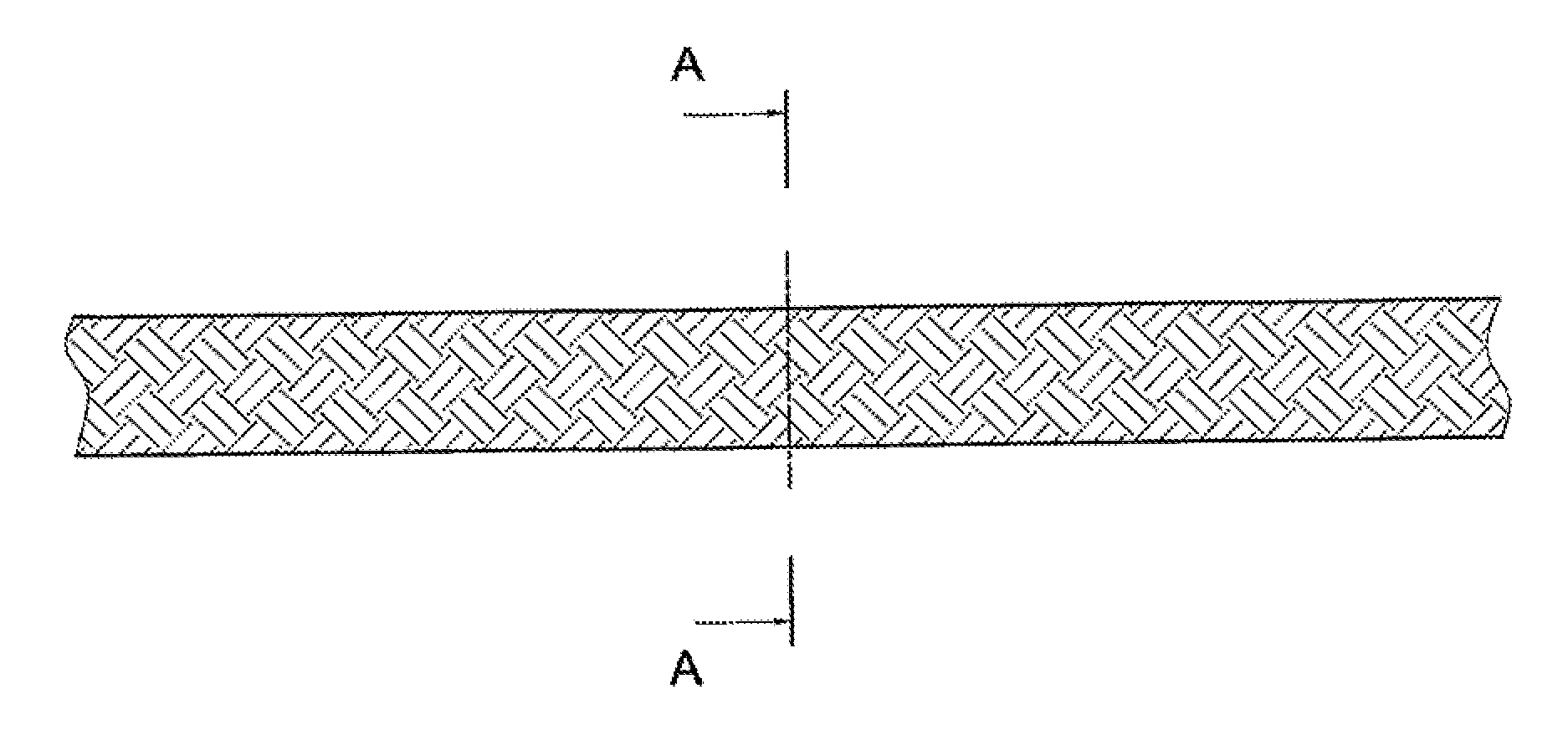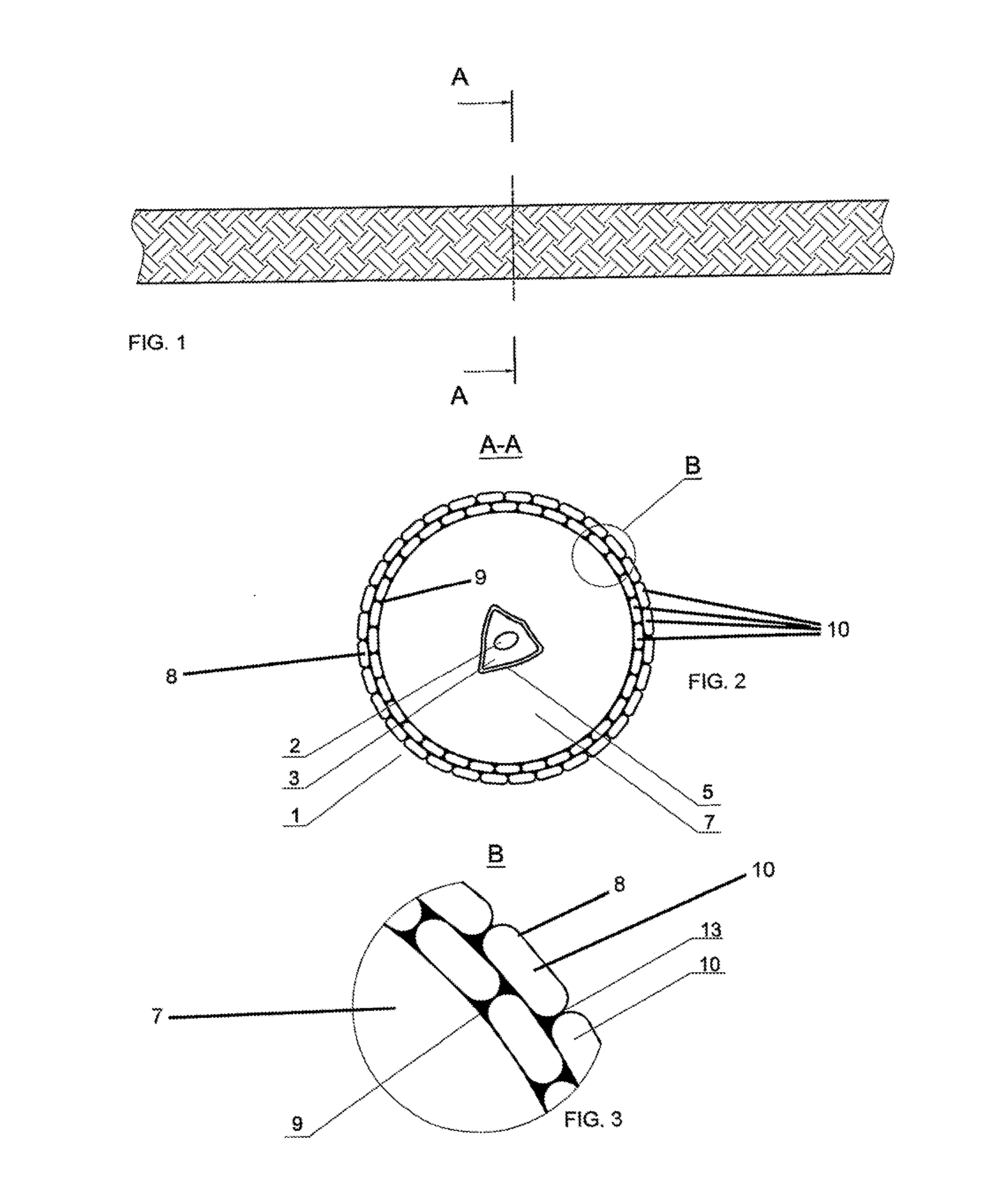Synthetic rope for powered blocks and methods for production
a technology of powered blocks and synthetic ropes, applied in the field of synthetic ropes, can solve the problems of reducing the strength of steel wire ropes for a given diameter, increasing the longevity of certain steel wire ropes, and failing to increase either the strength of ropes or their longevity, so as to improve strength retention, improve longevity, and improve the effect of strength
- Summary
- Abstract
- Description
- Claims
- Application Information
AI Technical Summary
Benefits of technology
Problems solved by technology
Method used
Image
Examples
Embodiment Construction
[0041]FIG. 2 and FIG. 3 illustrate essential constructional components of one of the most preferred embodiments for use with high tension powered blocks of the rope for powered blocks and winches of the present disclosure that is identified by the general reference character 1. FIG. 2 depicts a preferably thermoplastic shaped supportive core 3 enclosing a lead core 2, the shaped supportive core 3 being enveloped within a flow shield sheath 5. Strength member 7 encloses the combination of the shaped supportive core 3, its enveloping flow shield sheath 5 and its lead core 2. Sheath 8 preferably is of a braided construction and is adhered to strength member 7 by elastic adhesive substance layer 9, that preferably is formed of a settable adhesive substance. Preferably braided sheath 8 is formed of multiple coverbraid strands 10 by use of a braiding machine, the coverbraid strands 10 preferably are of a laid construction. Optionally, and preferably, as shown in more easily visible detail...
PUM
| Property | Measurement | Unit |
|---|---|---|
| temperature | aaaaa | aaaaa |
| temperature | aaaaa | aaaaa |
| temperature | aaaaa | aaaaa |
Abstract
Description
Claims
Application Information
 Login to View More
Login to View More - R&D
- Intellectual Property
- Life Sciences
- Materials
- Tech Scout
- Unparalleled Data Quality
- Higher Quality Content
- 60% Fewer Hallucinations
Browse by: Latest US Patents, China's latest patents, Technical Efficacy Thesaurus, Application Domain, Technology Topic, Popular Technical Reports.
© 2025 PatSnap. All rights reserved.Legal|Privacy policy|Modern Slavery Act Transparency Statement|Sitemap|About US| Contact US: help@patsnap.com


